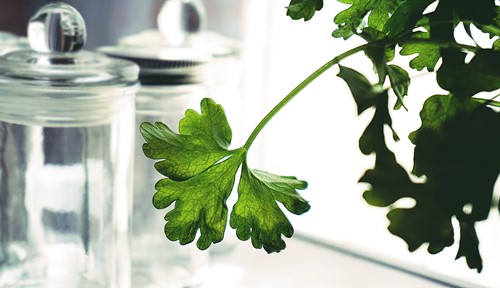
Photo by Suzy Hazelwood from Pexels
If having freshly grown herbs at the tip of your fingertips appeals to you, growing an indoor herb garden is right up your alley. There are many flavorful herbs that you can easily grow indoors. The following are a few of the herbs that are most conducive to an indoor growth environment:
Easy-to-Grow Herbs For Indoor Gardeners
Chives
You can grow chives virtually anywhere. This herb is a wonderful addition to a buttered baked potato or a great way to spice up a bland food dish. Cut chives at their base, and don’t harvest more than ⅓ of your bunch at one singular time.
Cilantro
This fun herb is sometimes known as Chinese parsley. You can eat all parts of this plant, but most often, the dried seeds or fresh leaves are the best part to add to your cooking. To most, cilantro has a tart taste, similar to a lemon/lime taste. Keep in mind, cilantro’s growth is short-lived. This means you need to keep seedlings going in two to three-week intervals to ensure you have a good supply on hand.
Basil
You can use basil in a variety of ways. Blend it in sauces, place whole leaves on your pizza, chop it up and add to your salad, top pasta, and much more. Use smaller basil for indoor herb gardens. This plant can get large if you don’t stick to the smaller globe varieties.
Mint
This herb has many benefits and is medicinal in some forms. It helps ease queasy stomachs, calms anxiety and stress and promotes restful slumber. Use it to create peppermint tea to calm the digestive tract and ease cramps, gas and indigestion.
Thyme
Thyme plants are easy to start. Begin by repotting from a nursery plant. You can even divide a plant into a smaller portion from a larger outside variety. You can also easily propagate this from cuttings, similar to sage and rosemary. Thyme is a Mediterranean herb and is the perfect addition to a variety of foods, including soups, marinades, vegetables, meat and more.
Oregano
This flavorful herb is ideally suited to oil-based dishes. Many cooks combine olive oil with oregano to create a tasty vinaigrette or marinade. Oregano fits best with beef, chicken or lamb dishes. It is also commonly paired with tomato-based dishes, like pasta sauce or pizza. Be sure to add oregano towards the end of the cooking process. This ensures the flavor of the herb is not lost. Also, dried oregano is more flavorful than fresh.
Sage
Ensure sage has good potting soil. Also, when establishing a new plant, keep the cut moist. Sage will often root well in a few week's time. This herb is best used to bolster omelets, tomato sauce, bean dishes, or even holiday stuffing.
Having herbs conveniently at hand when cooking is a luxury made possible by an indoor herb garden. Consider the herbs listed above as some possibilities. Each of them are considered easy-to-grow and make great beginner’s plants to ease into the process of herb gardening.
About the Author

Cassie Studstill
On the "Forgotten Coast," we are serious about fun, relaxing, and loving the beach-to-bay life. As your real estate partner, let us manage the before and during, so after you can quickly get back to where you want to be - enjoying our unspoiled haven on the sea.
